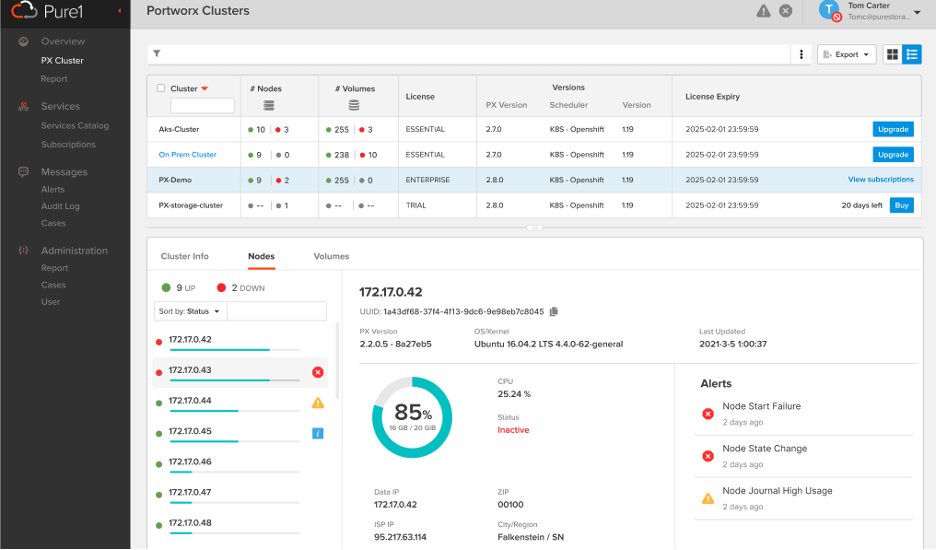Pure Storage Expands Portworx’s K8s Storage Reach
At its online Pure//Accelerate Digital event, Pure Storage today announced it has extended Portworx Enterprise to support clusters running the VMware Tanzu distributions of Kubernetes in addition to adding support for dynamic storage provisioning on its FlashArray and FlashBlade platforms. Pure Storage acquired Portworx last fall.
The company has also updated its Pure1 Digital Experience monitoring to includes a recommendation capability enabled by machine learning algorithms running in an artificial intelligence (AI) engine dubbed Meta. The Pure1 Digital Experience tracks both how resources are being used and forecasts what will happen if workloads are moved or added. It also surfaces analytics to enable IT teams to meet the requirements of a service level agreement (SLA).
Pure Storage also has added a Pure1 service catalog through which end users can procure additional services.
Pure Storage CEO Charles Giancarlo says IT organizations need to be able to orchestrate storage in the same manner they orchestrate Kubernetes clusters, especially as more data is collected and analyzed at the edge. Rather than connecting a storage array via the container storage interface (CSI), Portworx is deployed as software-defined storage that runs natively on Kubernetes clusters. Different classes of data will also have different attributes that IT teams need to be able to manage across what has become an extended enterprise, adds Giancarlo.
How data and storage is managed in Kubernetes environments is becoming an issue as more stateful applications are deployed on various classes of data stores running in a Kubernetes environment. IT teams want to be able to consolidate the management of compute and storage on those platforms to reduce the total cost of IT. Otherwise, a separate administrator needs to be hired to manage an external storage system accessed via CSI.
As the amount of data on Kubernetes platform steadily grows, those IT organizations are also going to encounter data management challenges that could easily span fleets of Kubernetes clusters, notes Giancarlo. IT teams, finally, will also need to find ways to secure that data, he adds.
That level of complexity will require IT organizations to rely more on AI capabilities to manage Kubernetes platforms at scale, says Giancarlo.
It’s not clear to what degree IT teams are embracing AI to manage various platforms, but there is a high correlation between adoption of Kubernetes and organizations that have embraced DevOps best practices to automate the management of both applications and the infrastructure they are deployed on. Site reliability engineers (SRE) that manage Kubernetes environments are not likely to be as intimidated by AI as the average IT administrator.
Of course, it’s unlikely AI will be replacing SREs or, for that matter, IT administrators. Rather, AI will primarily augment the capabilities of the existing staff in a way that enable organizations to keep a lid on the total cost of IT labor across a highly distributed computing environment. The important thing will be for IT teams to understand how various tasks are being automated just in case the AI model gets it wrong at a level of scale that would be very hard to repair.





